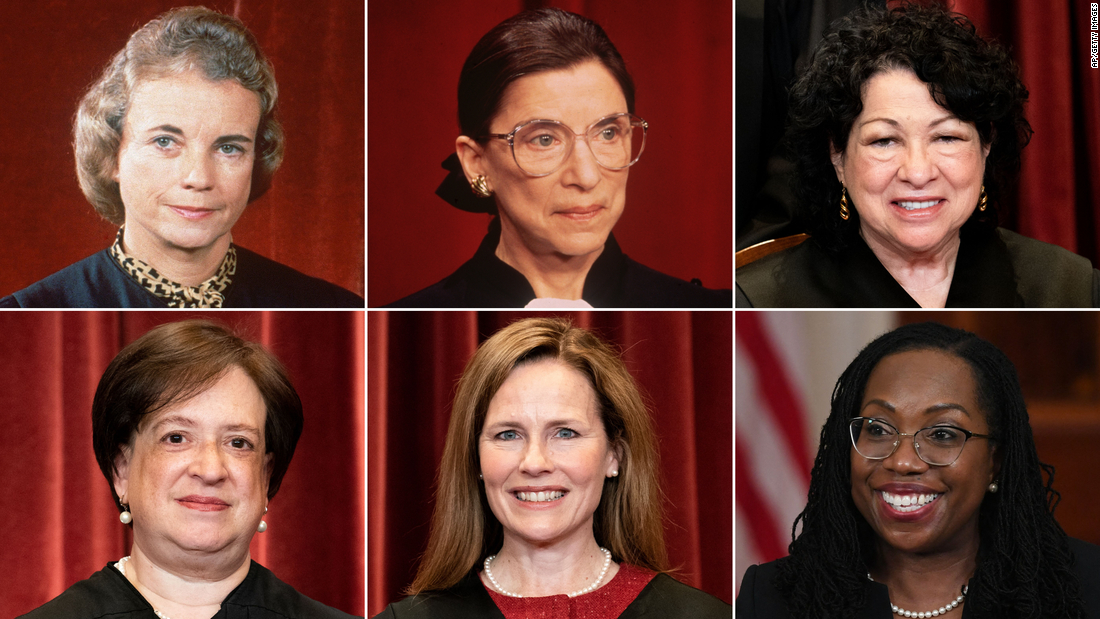How Many Women Are In the Supreme Court?
Females justices
The United States Supreme Court stands as the apex of the nation’s judicial branch, wielding immense power in interpreting the Constitution and shaping the legal landscape. Throughout its history, the Court has witnessed a myriad of justices who have contributed to the nation’s jurisprudence. However, a striking reality looms over this exalted institution – the underrepresentation of women.
Historical Context
The genesis of the Supreme Court traces back to the early days of the United States. Established by the Constitution, its role as the ultimate interpreter of law and justice was cemented. But the path to the present was marred by a lack of diversity, with women’s voices absent from its hallowed chambers for decades.
Pioneering Women on the Supreme Court
Out of the 115 justices who have ascended to the bench, only six have been women. This stark disparity underscores the long-standing gender imbalance. Presently, four remarkable women are justices: Sonia Sotomayor, Elena Kagan, Amy Coney Barrett, and Ketanji Brown Jackson. These exceptional jurists have shattered glass ceilings and etched their names in the annals of legal history.
Who are the female Supreme Court justices?
U.S. Supreme Court
- Amy Coney Barrett. Associate Justice. Appointed by Trump. Joined the Court on 10/27/20
- Elena Kagan. Associate Justice. Appointed by Obama. Joined the Court on 08/08/10
- Sonia Sotomayor. Associate Justice. Appointed by Obama
- Ketanji Brown Jackson. Associate Justice. Appointed by Biden
Women on the Supreme Court
Sonia Sotomayor: A Trailblazer from the Bronx
Sonia Sotomayor’s journey to the Supreme Court is a testament to resilience and triumph. The U.S. Senate confirmed her as a justice in 2009, succeeding Justice David Souter. Hailing from the Bronx, she shattered barriers as the first Latina on the Court. Her tenure has been marked by unwavering support for civil rights and defendant rights.
Elena Kagan: Scholarly and Strategic
Elena Kagan, a justice confirmed in 2010, boasts a unique trajectory. Unlike her peers, she lacked prior judicial experience. Her appointment followed a prestigious stint as the first female U.S. Solicitor General and the dean of Harvard Law School. Her academic acumen and strategic approach have left an indelible mark on the Court.
Amy Coney Barrett: A Recent Controversial Addition
The confirmation of Amy Coney Barrett in 2020 stirred fervent debates. Replacing Justice Ruth Bader Ginsburg, Barrett’s track record as a judge on the Seventh Circuit Court of Appeals drew attention, particularly her conservative rulings. Her views on issues like abortion have fueled discussions about the Court’s ideological balance.
Ketanji Brown Jackson: Breaking Barriers
April 7, 2022, heralded a historic moment as Ketanji Brown Jackson became the first African-American woman on the Supreme Court, succeeding Justice Stephen Breyer. Jackson’s meticulous approach as a judge and her prior roles on the D.C. District Court and the U.S. Court of Appeals have positioned her as a trailblazer.
Who is the first woman for Supreme Court?
who was the first female supreme court justice
Sandra Day O’Connor was the first woman to serve as an associate justice of the Supreme Court of the United States, from 1981 to 2006. She was a moderate conservative voice for over 20 years, and was the swing justice from the early 1990s until her retirement in 2006.
Sandra Day O’Connor: Conservative Groundbreaker
Sandra Day O’Connor (b. 1930) was appointed by President Ronald Reagan in 1981 as the first woman Supreme Court Justice in history. She served on the Court for 24 years before retiring in 2006. O’Connor donated her papers from her first five years on the Court, as well as from her earlier career, to the Library of Congress Manuscript Division. These papers provide insight into major cases related to gender discrimination that O’Connor heard during her early days on the bench.
As the first woman justice, O’Connor also received hundreds of congratulatory letters in 1981 from women and girls inspired by her groundbreaking appointment. When she underwent surgery for breast cancer in 1988, she likewise received numerous supportive letters from breast cancer survivors.
Ruth Bader Ginsburg: Icon of Equality
n 1993, Ruth Bader Ginsburg (1933-2020) became the second woman to serve on the Supreme Court when she was nominated by President Bill Clinton. Prior to joining the Court, Ginsburg had an acclaimed career fighting for gender equality as a lawyer with the ACLU in the 1970s.
Landmark cases argued by Ginsburg
Ginsburg’s papers contain files related to the landmark Reed v. Reed (1971) case, where the Supreme Court ruled that discrimination based on gender violated the Equal Protection Clause. This was the first time the Court applied this reasoning in a case brought on behalf of women.
Ginsburg also worked on cases like Frontiero v. Richardson (1973) and Craig v. Boren (1975) to try to get the Court to apply heightened scrutiny to laws that make gender-based distinctions. Though ultimately unsuccessful, these cases laid important groundwork for later advances in gender discrimination law.
Other important cases in Ginsburg’s papers
Other notable gender discrimination cases found in Ginsburg’s papers include:
- Weinberger v. Wiesenfeld
- Healy v. Edwards
- Califano v. Goldfarb
- Duren v. Missouri
Her collection also includes many speeches and writings reflecting her advocacy for women’s rights and support of the Equal Rights Amendment.
Florence Ellinwood Allen
Over 50 years before O’Connor joined the Court, Florence Ellinwood Allen (1884–1966) became the first woman appointed to a U.S. court of last resort when she joined the Ohio Supreme Court in 1922. She later served on the U.S. Court of Appeals for the Sixth Circuit from 1934-1959 and was considered as a potential Supreme Court nominee.
Allen’s papers relate to her groundbreaking judicial career, her suffrage and women’s rights activism, and her interests in promoting peace through international law.
Juanita Kidd Stout
In 1959, Juanita Kidd Stout (1919–1998) became the first African American woman to serve as a judge in Pennsylvania. She earned a reputation as the “judicial scourge of murder, mayhem, and bad grammar” for her tough stances and focus on the importance of education.
Stout’s recently acquired papers deal mostly with her influential judicial career and role as a pioneer for both women and African Americans in the judiciary.
Mabel Walker Willebrandt
Though not a judge, Mabel Walker Willebrandt (1889–1963) was the second woman appointed as an Assistant Attorney General in 1921. She became one of the most zealous enforcers of Prohibition, earning her the nickname “Prohibition Portia.”
Willebrandt’s papers provide insight into her Supreme Court appearances, political and social activity in Washington, and perspectives on women’s evolving role in the political sphere.
Regina Clark McGranery
As Deputy Attorney General of Pennsylvania, Regina Clark McGranery (1907–1975) was active in Democratic politics and worked to advance women’s leadership through organizations like the Girl Scouts and Woman’s National Democratic Club.
McGranery’s papers document the changing political roles for women during the New Deal era as well as early legal perspectives on issues ranging from birth control to women’s rights within religious institutions.
Though still lacking equal representation, the number of women serving in the higher ranks of the U.S. judicial system has steadily grown since O’Connor first joined the Supreme Court. With each new pioneering female judge and justice, more young women see a future for themselves in the law.
Conclusion
As the Supreme Court’s history unfolds, the emergence of women justices stands as a beacon of progress. From Sonia Sotomayor’s pioneering spirit to Ruth Bader Ginsburg’s enduring legacy, each woman has contributed to shaping the nation’s legal landscape. While the Court continues to evolve, these remarkable jurists remind us of the significance of representation and the quest for justice.
FAQs about Women on the Supreme Court
1. How many women have served on the Supreme Court?
- Only six women have served as justices on the U.S. Supreme Court.
2. Who was the first female Supreme Court justice?
- Sandra Day O’Connor, nominated by President Reagan in 1981, was the first female justice.
3. How has Ruth Bader Ginsburg influenced the Court?
- Ruth Bader Ginsburg championed women’s rights and gender equality, consistently voting with the liberal bloc.
4. What is Ketanji Brown Jackson known for as a judge?
- Ketanji Brown Jackson is known for her meticulous work and historic confirmation as the first African-American woman on the Supreme Court.
5. How did Sandra Day O’Connor’s retirement impact the Court?
- Sandra Day O’Connor’s retirement marked the end of an era but left a lasting impact on the Court’s history due to her measured
Who was the first woman Supreme Court Justice?
A: Sandra Day O’Connor, appointed in 1981.
How many women currently serve on the Supreme Court?
A: There are currently three women serving on the nine-member Supreme Court – Justices Sotomayor, Kagan, and Jackson.
Who was the second woman appointed to the Supreme Court?
A: Ruth Bader Ginsburg, appointed in 1993.
What landmark case did Ruth Bader Ginsburg argue regarding gender discrimination?
A: One landmark case was Reed v. Reed in 1971, where the Supreme Court ruled that discrimination based on gender violates the constitution’s Equal Protection Clause.
Who was the first female African American judge in Pennsylvania?
A: Juanita Kidd Stout, appointed to the Court of Common Pleas in 1959.








